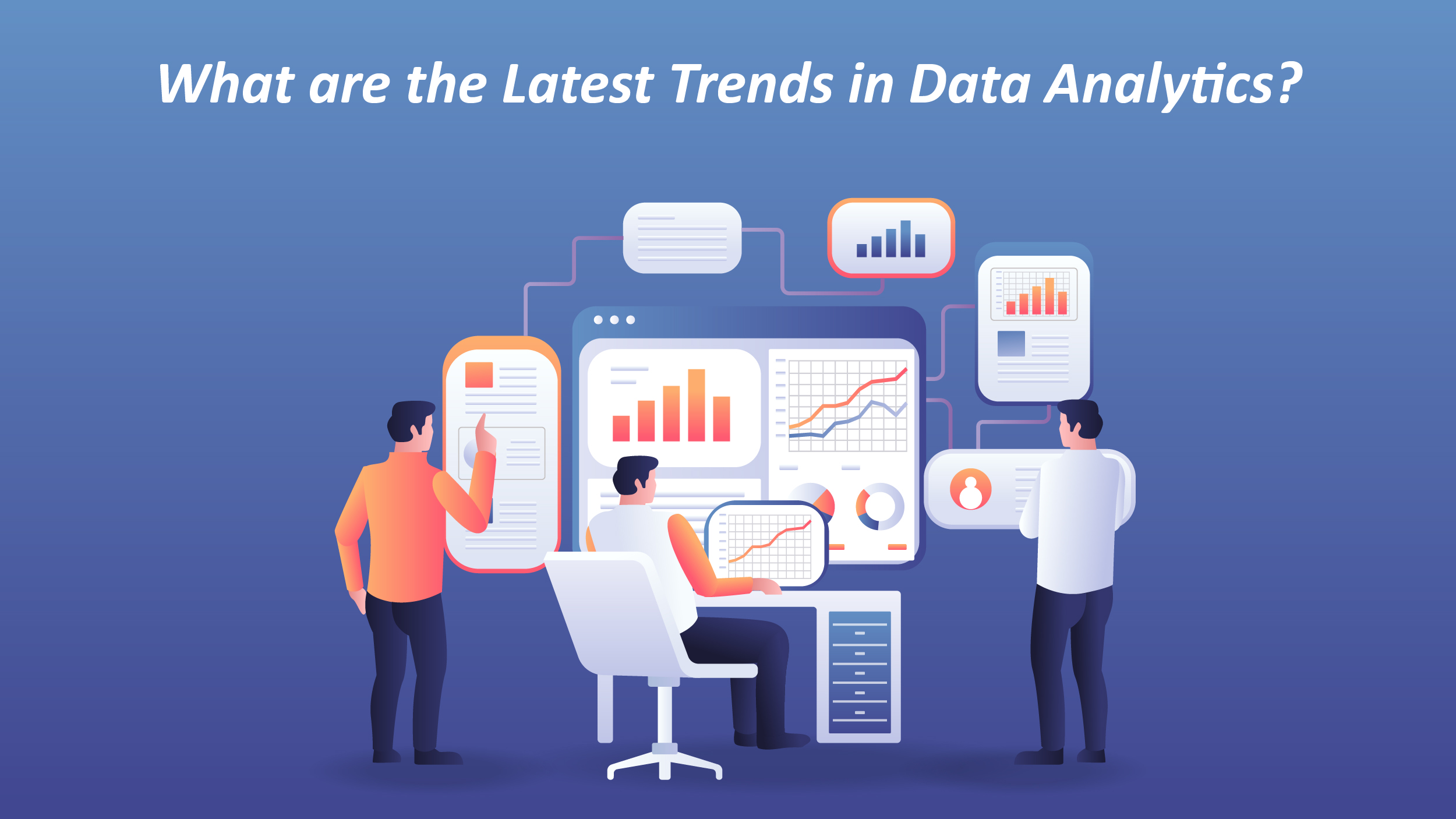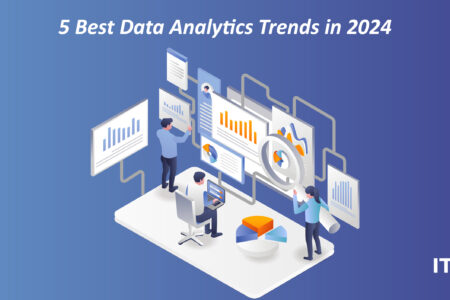Did you know that data analytics has its roots in the 18th century? The field of statistics was developed by mathematicians like Carl Friedrich Gauss and Adrien-Marie Legendre, who used data analysis techniques to understand patterns and relationships in data. Fast forward to the 21st century, and data analytics trends have gained a multitude of momentum and have become a driving force in the digital world, powering everything from personalized marketing campaigns to disease diagnosis.
In this digital age, businesses are gathering more data than ever before, and the data analytical trends are showing no signs of slowing down. With data analytics, businesses can make informed decisions, gain a competitive advantage, and stay ahead of the curve. In this blog, we’ll be taking a deep dive into the latest and most innovative data analytics trends. Let’s get started!
What is Data Analytics?
Data analytics is the systematic examination of raw data with the aim of drawing meaningful conclusions. This field employs a range of techniques and automated processes, including mechanical algorithms, designed for human interpretation. The significance of data analytics is rooted in its capacity to assist businesses in optimizing performance, enhancing operational efficiency, maximizing profits, and facilitating more strategically informed decision-making.
Also Read: What Are the Must-Know Social Media Trends for 2024?
What are the Latest Trends in Data Analytics?

1. AI-Powered Data Analytics
The transformation of business operations in the contemporary world can be attributed to AI-driven data analytics. The integration of artificial intelligence into data analytics has not only enhanced the visualization and analysis of data but has also significantly improved human data handling capabilities. AI systems contribute to faster and more flexible decision-making processes by adapting to change seamlessly.
The current trend in AI-powered data analytics is driven by advanced and dynamic algorithms that assess data at various scales, enabling the handling of multiple cases that traditional methods cannot efficiently address. Notably, AI algorithms have demonstrated a remarkable 50% increase in production leads, with 80% of employees reporting improvements in productivity. As we look ahead, a substantial 37% growth in the global AI market size is anticipated by 2030. This underscores the growing influence and efficacy of AI-powered data analytics in shaping the future of business and data management.
2. Predictive Analytics for Personalized Medicine
One of the latest data analytics trends in healthcare is the use of predictive analytics for personalized medicine. By leveraging advanced analytics and machine learning algorithms, healthcare professionals can analyze vast datasets that include patient records, genetic information, and treatment outcomes. This enables the prediction of individual patient responses to specific treatments, allowing for more personalized and targeted medical interventions. This trend not only enhances the efficiency of healthcare delivery but also contributes to better patient outcomes by tailoring treatments to the unique characteristics of each individual.
3. Augmented Analytics
Augmented Analytics is one of the key business data analytics trends in 2024’s data-driven world. Augmented analytics is a part of data analytics that uses Artificial Intelligence, Machine Learning, and Natural Language Processing to automate and improve data sharing, data analysis, business intelligence, and more. Augmented Analytics has the capability to perform the tasks of a Data Scientist. It can help with data preparation, process it, automate it, and derive insights from the data.
With the use of augmented analytics, people can quickly and easily gain insights from data without the need for data scientists or analysts. It can give visual and interactive representations of data that make it simpler for people to understand and explore, as well as automate processes like data preparation, data discovery, and insights creation. Additionally, patterns and connections in data that would be challenging to find through manual analysis can be found with the use of augmented analytics.
4. Real-world Evidence (RWE) Analytics
One of the notable data analytics trends in pharmaceuticals is the increasing reliance on Real-world Evidence (RWE) analytics. Traditional clinical trials have limitations in terms of sample size and duration. RWE analytics involves the analysis of real-world data from diverse sources, such as electronic health records, wearables, and patient-reported outcomes. This approach provides pharmaceutical companies with valuable insights into the effectiveness and safety of drugs in real-world scenarios. By incorporating RWE analytics into drug development and post-market surveillance, pharmaceutical companies can make more informed decisions, accelerate the drug development process, and ensure the safety of their products.
5. Fraud Detection through AI and Machine Learning
Among the emerging data analytics trends in banking involves the use of artificial intelligence (AI) and machine learning for fraud detection. With the increasing sophistication of financial fraud, traditional rule-based systems are often insufficient to detect complex and rapidly evolving fraudulent activities. Advanced analytics algorithms, powered by AI and machine learning, can analyze patterns in transaction data in real-time, identifying anomalies and potential fraudulent behavior. This proactive approach enables banks to detect and prevent fraudulent activities more effectively, safeguarding the financial interests of both the institutions and their customers. The continuous refinement of these algorithms ensures adaptability to new fraud tactics, making it a crucial trend in the financial sector.
Brief Peek Into the Future of Data Analytics
Winding up
As we conclude our exploration of data analytics trends in 2024, it becomes evident that the landscape is evolving at an unprecedented pace, reshaping the way organizations derive insights from their data. The overarching theme centers around the integration of advanced technologies such as artificial intelligence, machine learning, and augmented analytics, enabling more sophisticated and real-time analysis. The focus on ethical and responsible data practices is gaining prominence, reflecting a growing awareness of the societal impact of data analytics. Collaboration between data scientists, domain experts, and business stakeholders is becoming increasingly crucial to derive meaningful insights and drive informed decision-making. As we step into the future, the data analytics landscape promises a dynamic and transformative journey, where adaptability and innovation will be key drivers of success.

